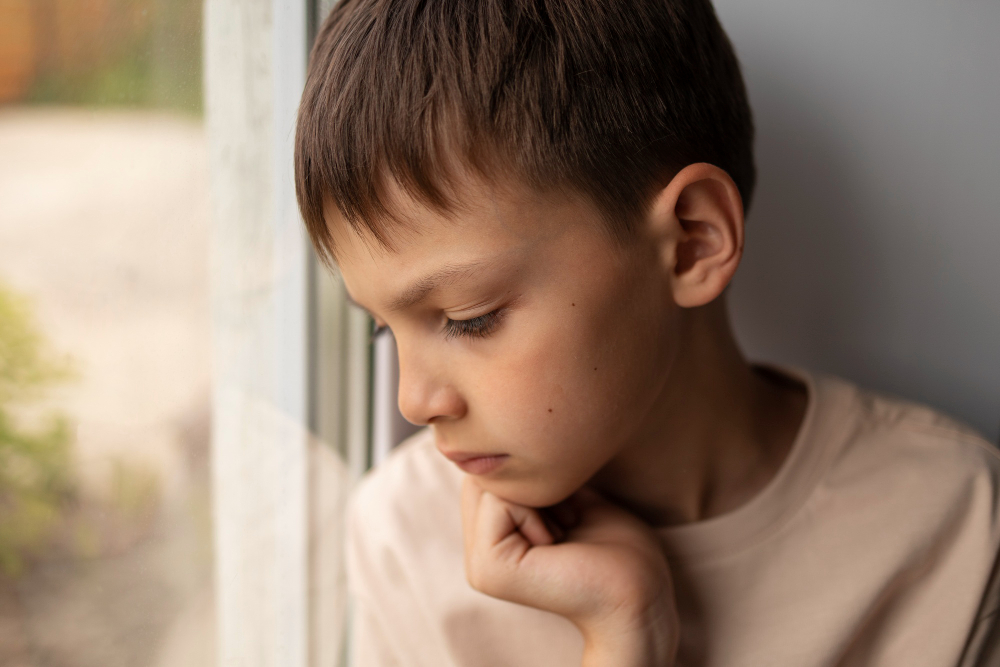Before kindergarten began, we told them—unequivocally, painstakingly, with as much specificity as we could muster—that our son had been harmed in daycare, that he had a long line of diagnoses and was awaiting an autism assessment, that his nervous system was thrashed, and that he would require sustained, full-day relational support in order to experience safety in a classroom. He would require consistent adults, declarative language, predictable transitions, sensory regulation, and a kind of gentle tact that didn’t demand performative trust before trust had been earned.
They responded with reassurance, invoking a rhetoric of optimism: many children arrive at school with complex histories, they said, and often flourish once settled. Their decision to “wait and see” was framed not as inaction, but as faith—as though suspended observation might soothe a nervous system already primed for vigilance and threat detection.
The decision to withhold support was not described as refusal, but as belief: that the needs we described would resolve with time.
The coatroom, the closet, the collapse
Shortly after starting, he stopped entering the classroom. He curled into himself in the coatroom and fell silent. Often, they called us to retrieve him—usually without explanation, often with urgency.
Once, when we took 30 minutes longer than expected, they warned they might need to call 911. They hadn’t called anyone else on the emergency list. It was a thinly veiled threat that if we didn’t comply with every request, they would make our lives more complicated.
We added ten names to the pick-up list—ten numbers we hoped might conjure safety. But the fear never lifted. I still flinch when the phone rings. Once, I left a client meeting—ten senior stakeholders, a high-stakes presentation—because an unknown number flashed across my screen. It was a telemarketer. I broke down in the hallway and couldn’t go back in. The school hadn’t called, but my body had stopped distinguishing possibility from threat.
Eventually, after months of advocacy, a short-term behaviour specialist was assigned. She brought regulation and relational steadiness. He trusted her quickly. With her in the room, school became “two out of ten hard”—a measurable shift, a fragile glimpse of ease. But her presence was provisional, marked from the outset as exceptional, anomalous, outside the operational norm. He was deemed ineligible for full-time support. His designation, they said, didn’t meet the threshold. Many children, they reminded us, manage without.
He began to fall apart again.
One day, a kind of unbearable overwhelm surged through his body, and he propelled himself to the front of the classroom, his small hands closing around a teacher’s throat in a moment of terrified dysregulation, leaving stunned expressions on the faces of his peers. The teacher wrestled him off. We were called again.
The machinery of thresholds
Every conversation acknowledged his needs, then abstracted them—converted what was urgent and embodied into procedural categories and administrative layers. He hadn’t reached the crisis bar, they said. The system, they explained, had protocols. The funding, they clarified, was coded and conditional.
But in British Columbia, designation governs funding; need determines service. No statute ties support to diagnosis alone. No regulation permits indefinite delay. Schools are obligated to respond to actual, documented, observable need—not to staffing allocations or fiscal choreography.
What inclusion looked like
At one meeting, they explained that if we didn’t voluntarily keep him home, they might need to consider suspension. I asked what that would mean. They said it would go on his permanent record. I asked if they wouldn’t feel ashamed to write that on the record of a six-year-old child.
Eventually—after his so-called ‘voluntary absence’ and a sequence of hollow meetings layered with euphemism and veiled threat—he was allowed to return for one hour per day in a room marked closet on the floor plan.
I sat just outside the door, laptop on my knees and body braced, because my presence had been written into the safety plan as a condition of his attendance. And though he returned to the building, he never returned to kindergarten—never re-entered the social world of stories and classroom rituals and the sense of belonging.
What they said, what they chose
The language they used was fluent in civility—offering praise for our advocacy, gratitude for our flexibility, assurances of shared commitment, and delay repackaged as hope.
They responded with warmth, but chose deferral. They acknowledged pain, but institutionalised absence. They routed our clarity through internal scripts, and while my son slowly tried to heal in a windowless room, they maintained the performance of procedural integrity.
Over the course of 2017, ten staff would rotate through his file. In 2018, six more. Many of those changes were triggered only after I intervened to demand the reinstatement of support that had been silently withdrawn. Almost every school year began with zero supports in place, despite extensive documentation of persistent, intensive needs.
Even when I escalated to district-level appeals—when promises were made in writing, when transition meetings were held and detailed plans constructed—those plans were routinely abandoned. And so, year after year, the message arrived unambiguously: the plan is to break you.
I still wonder what might have unfolded if they had intervened early—if they had acted, instead of watched.
-
Not a stick in the mud
When I told another mom recently—someone kind, someone well-meaning, someone whose son used to play with mine back when things were easier—that I was feeling fragile about him being home since March, and that it had all gotten heavier than I expected, she…
What real inclusion requires
Inclusion is not ambient goodwill or vague belief in potential. It is structure. It is commitment. It is the deliberate, scaffolded readiness to meet children precisely where they are—not where we wish they would be, not where budget lines suggest they belong.
It means eighteen students per class. It means a full-day educational assistant. It means embedded resource support, school counsellors with relational bandwidth, and staff development rooted in trauma, neurodiversity, and attuned co-regulation.
Inclusion requires preemptive investment—support must precede harm. Anything else is containment.
If they had tried
Now I carry the record of absences—hundreds of missed days—a collapsed archive of apologies, rejections, cancellations, and deferments. And a child who has now dropped out of Grade 7.
While they delayed—gently, warmly, always beneath the guise of collaboration—they translated our certainty into eligibility criteria, reprocessed our knowledge into procedural ambiguity, and rendered an obvious, urgent need invisible.
And somewhere in that engineered ambiguity—between the email chains and the floor plan, the pick-up calls and the policy binders—a child stopped entering his classroom. Stopped drawing pictures. Stopped laughing out loud.
The cost of deferral
This is what it costs when systems wait instead of act: it costs a child’s belief in school, a parent’s ability to remain employed, a family’s trust in public institutions.
And these are not incidental losses. They are structural, systematised losses—coded into budgets, absorbed into attrition, buried beneath euphemism.
Because every time we defer inclusion, we manufacture harm. And the bill comes due—not in the ministry’s ledgers, but in emergency rooms, in human rights tribunals, in foreclosed futures, in broken trust and bone-deep grief, and in the silent exit of children whose potential we were told was priceless.
-
The scarcity script: how manufactured famine shapes public education
British Columbia’s public schools are not suffering from a natural shortage—they are operating under a system of manufactured scarcity. This blog explores how austerity, rationing logic, and institutional self-preservation create harm for disabled students and their families. Drawing on thinkers like David Graeber,…








